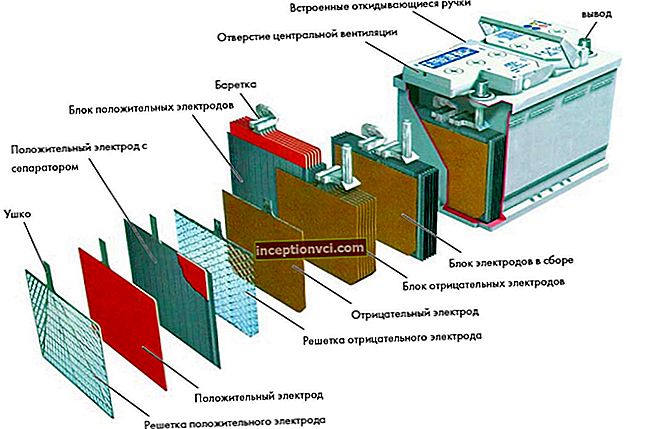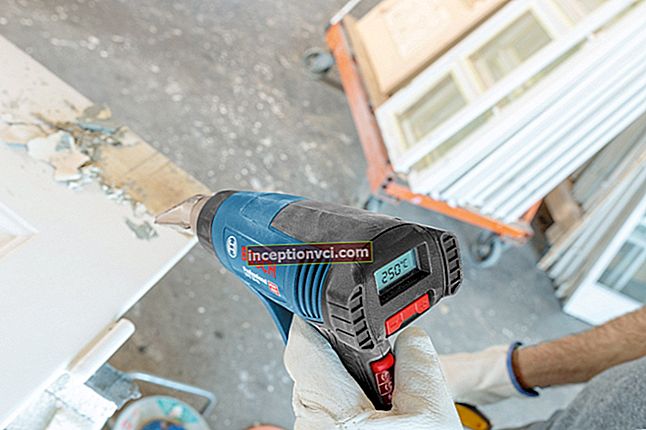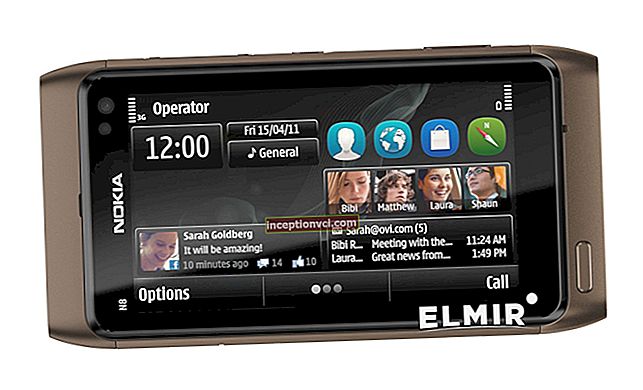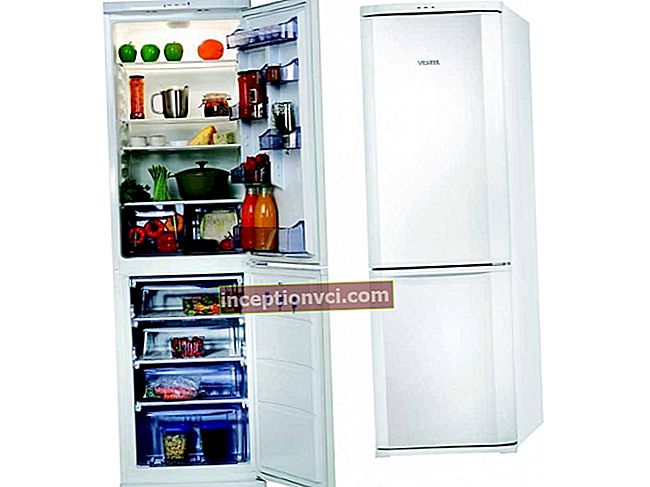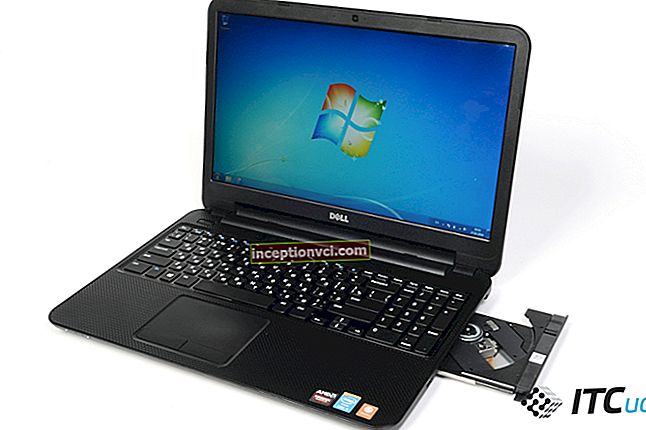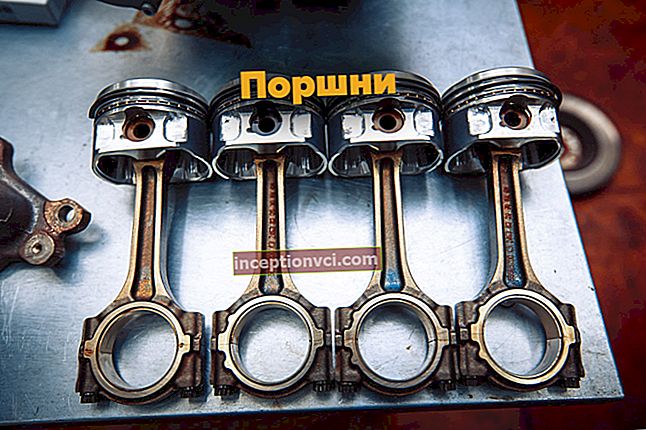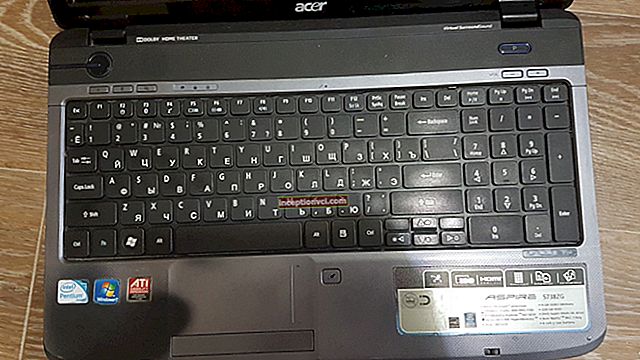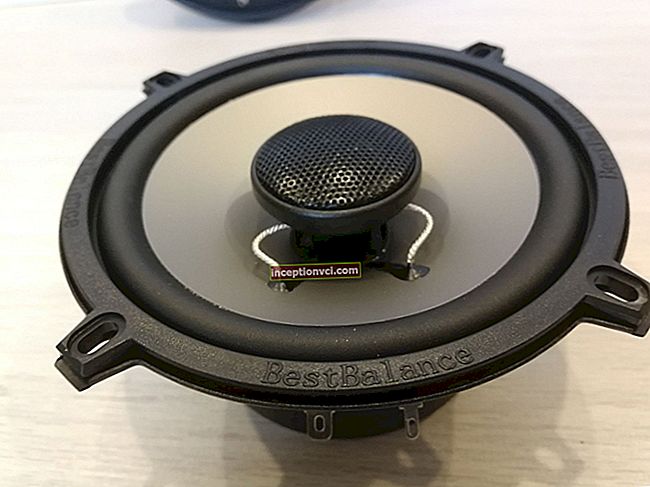HTC One Dual SIM
To the delight of some users, HTC is well aware that one SIM card is good, and two SIM cards are better, as this provides more freedom in mobile communications.

Even two years ago, most Dual-SIM smartphones were exclusively from small and medium-sized Chinese manufacturers. Now this segment of the market, realizing its importance, is given special attention by the leading companies, one of which is HTC. That is why the Taiwanese manufacturer presented to its fans a modification of its flagship smartphone HTC One - the HTC One Dual SIM model, from the name of which it can be understood that it supports work with two SIM cards. It is also worth noting that such modifications as HTC One mini and HTC One Max were previously presented, the first one can already be found on sale, and the second one will soon hit the shelves.
What else, in addition to support for working with two SIM cards, the HTC One Dual SIM model can boast of, this review will help you figure it out.
Appearance and ergonomics of the case

HTC One Dual SIM looks the same as HTC One. Most of the body of the smartphone is made of metal, namely anodized aluminum. The body is assembled well, as it should be for a smartphone of the highest price category. The only drawback of the metal case, which I would like to note right away, is its high heat conductivity and, accordingly, considerable heat capacity, in particular from the processor. During normal use, the case heats up to the temperature of the palm, but if you play resource-intensive games, the case heats up relatively strongly, which can give the user unpleasant sensations.


HTC calls the body of the One Dual SIM smartphone "all-metal", but in reality the sides of the smartphone and parts of the back panel are made of white plastic. Front panel details are made exclusively of glass or metal. Most of the front panel is occupied by a 4.7-inch display, covered with a tempered protective glass Corning Gorilla Glass 2. Also, the protective glass goes over the display frame and the touch buttons "Back" and "Home" located under it. Above the display and under the touch buttons are symmetrical aluminum inserts with a mass of holes for a communication speaker and two multimedia speakers. Also above the display of HTC One Dual SIM, you can see a standard set of sensors - lighting and proximity, as well as a rather large lens for the front camera. In the right corner of the top perforation there is a missed event light. The indicator is small but bright enough.


The HTC One Dual SIM has a minimum of controls - only five buttons, two of which are touch-sensitive, located under the screen, and the other three are on the side edges. On the top side there is an audio output (3.5 mm) and a power button with an infrared port, which allows remote control of household appliances. In the right part of the lower side edge there is a standard microUSB port and a hole for the earpiece.


On the right side face of HTC One Dual SIM there is a paired aluminum volume control button for the multimedia speaker with a characteristic dotted pattern that is difficult to recognize by touch. The ergonomics of this button is poor, since it is flush with the body, and therefore it is difficult to find it blindly.



During operation, both metal and plastic on the sidewalls are easily scratched, which is why the smartphone loses its visual appeal. There is only one tool for protecting the case - a cover.


At the top of the smartphone there is a latch button that allows you to quickly remove the back cover of the device.Removing the back cover does not open access to the battery, but allows you to access service information, two slots for installing SIM cards and a slot for a microSD memory card.



As in the HTC One model, the Home button in the HTC One Dual SIM smartphone is multifunctional, pressing it once brings you to the main desktop, double pressing it opens the list of recently launched programs, and long pressing it allows you to launch the Google Now service. The HTC logo, located between the Back and Home buttons, is inactive, although the finger tries to press it.


The upper part of the rear panel of HTC One Dual SIM houses a large main camera lens, an LED flash and a noise canceling speaker. In the center of the rear panel there is the HTC logo, and in the lower part of it you can see a small beats audio logo, since the speaker system installed in the smartphone is from Beats Audio. The back panel has a rounded shape, which is why the smartphone fits comfortably in the hand, despite its relatively large size.

Screen

The HTC One Dual SIM has the same display as the HTC One. The screen has a diagonal of 4.7 inches and a resolution of 1080 x 1920 pixels. In this case, the pixel density is equal to 468 pieces per inch. This indicator is still the highest among all smartphones on sale. The display is excellent, bright, colorful, crisp and has great viewing angles.


The display is based on the Super LCD3 matrix, which is distinguished by high contrast and natural color reproduction. The minimum display brightness is 8 cd / m2, and the maximum brightness is 437 cd / m2. A backlight of 102.7 cd / m2 corresponds to 50% brightness. The minimum brightness is quite comfortable for work in low light, and the maximum brightness allows the display not to "go blind" even under bright ambient light. You can adjust the brightness of the backlight manually or use a light sensor for this, which will automatically adjust the brightness of the backlight depending on the brightness of the ambient light. The light sensor is working correctly.


The contrast ratio of the matrix is 800: 1, which is also a very good indicator. The color temperature is at 8500 Kelvin, which is well above the 6500 K reference, and this in turn leads to the fact that the image has an overly cold tint. On the one hand, this is a drawback, but on the other hand, this nuance does not allow the color gamut to be strongly "acidic", as in most matrices made using AMOLED technology. The color gamut of the smartphone display is almost 100% consistent with the sRGB reference color gamut.

Camera
Like the HTC One, the HTC One Dual SIM has a 4-ultra-pixel main camera. Although HTC insists that their "ultrapixels" are not the same "megapixels" that measure the resolution of cameras of other smartphones and cameras, and therefore, it is impossible to compare the HTC One Dual SIM with cameras of other smartphones, relying only on resolution.

In reality, the smartphone's camera resolution is exactly four megapixels, and the size of the camera matrix is 1/3 inch (8.47 mm), like most other cameras. What really distinguishes the main camera of the HTC One Dual SIM is the structure of the optical system, the size of the light-receiving cells and their number.

For those people who are versed in optics, it is no secret that the quality of images is influenced not by the size of the resolution, but by the size of the light detectors, the aperture ratio, the aperture value and other indicators. That is why HTC decided to improve the indicators of the above parameters as qualitatively as possible.


The light-receiving cells in the camera module, as already mentioned, are only four million, but each of the cells has a size of 4 sq. Km, and not 1.1 sq. Km, as in 13-megapixel camera modules of other flagship smartphones of 2013. Thanks to this solution, it was possible to expand the dynamic range and significantly reduce the level of noise that appears in the images.The f-number of the lens in most cameras is f / 2.6 or f / 2.4. This indicator of the camera lens of the HTC One Dual SIM smartphone is f / 2.0, which is why the lens aperture is higher, which allows more light to pass to the light-sensitive elements of the matrix and, as a result, get a better picture in conditions of poor visibility. It is also worth noting that the camera module is equipped with a two-axis optical stabilizer, which makes it possible to reduce the amount of "blur" when photographing with a long exposure, as well as the "shaking" of the image from shaking hands during photography.

With skillful use of manual settings, the main camera of the HTC One Dual SIM smartphone allows you to get high-quality photos, which, of course, are not very suitable for printing, but quite suitable for posting on social networks and various online services, for example, Instagram.

The quality of photos is significantly affected by the current version of the firmware, which does not allow you to take the highest quality pictures, their quality (at first glance) is the same as that of other flagship smartphones of 2013. Especially pronounced are not the best processing algorithms when shooting in Auto mode, despite the good technical parameters of the camera, the quality of pictures taken in low light leaves much to be desired - the photos are very blurry. And, for example, when shooting (also in the “Auto” mode) in conditions of sufficiently bright external lighting, the photos turn out to be strongly “overexposed” (corrected by turning on the HDR mode, but this should not be so). When shooting in the "Night" mode, in the pictures, again, despite the technical parameters of the camera module, you can only admire the abundance of noise. Fighting noise in automatic modes allows the forced setting of ISO 100. It remains to be hoped that software developers will be able to spend these shortcomings in the next firmware versions.

It is impossible to ignore the Zoe function, which allows you to record 3-second videos according to an unusual scheme - one second is recorded before pressing the camera shutter and two seconds after pressing it. The recording speed in this mode is eight frames per second, which makes it possible to obtain, in addition to short video recording, twenty photos, respectively. The footage is saved in separate folders. Each user will have to judge the expediency of this mode for himself, since no one knows who needs 3-second clips, the photo storyboard of which is not of the highest quality (there is a lot of noise in the pictures, and the edges of the photos are blurred).

Especially for the Zoe mode, the Zoe Share service has been developed, in which you can share your creativity with other users. To be fair, it should be noted that using the service is very convenient. Movies made in Zoe mode can be corrected by cutting out unsuccessful stills, or vice versa, choosing the best shots.

You can take photos with one resolution - 2688 x 1520 pixels. Further adjustments to photographs, including reducing their size, can be done using third-party programs. The aspect ratio of the picture when taking photos is 16: 9, it, like the resolution, cannot be changed.

Videos can be recorded in Full HD at 30fps, in HD 720p at up to 60fps, and in 1080p HDR at up to 28fps.
The front 2.1-megapixel camera of the HTC One Dual SIM does not give rise to any complaints, it fully copes with its purpose - providing high-quality video calls.
Dual SIM
Of course, the main difference between HTC One Dual SIM and HTC One is the support of the hero of this review for working with two SIM cards. At the same time, you should immediately pay attention that this work is not carried out alternately, as in most other smartphones that support work with two SIM cards, but at the same time, as in the HTC Desire 600 model, since the HTC One Dual SIM model has more than one , and two radio modules working independently.

When talking on one SIM card, the second SIM card always remains in touch and you can receive a call on it at any time. Also, if one SIM card is constantly transmitting data in the 3G network, it will be possible to call the second SIM card without hindrance. This principle of using SIM cards allows you to completely abandon call forwarding and save people who call you from having to listen to information that you are out of the network access zone.

The SIM card, which is installed in the first slot, can be used by the smartphone for data transmission, both in GSM and 3G networks, and the second works exclusively in the GSM network. Each user has the opportunity to choose the optimal combination of using SIM cards to maximize savings on communication and Internet access. There are several variations of using two SIM cards in the phone - either to distinguish between work and close environment with SIM cards, or use one SIM card for 3G Internet, and the second for communication, or simply use different SIM cards to call numbers of different operators, which is financially beneficial. In any case, the choice of the principle of using the capabilities of two SIM cards remains with the user.

There is no separate hardware button that would allow you to select a priority SIM card in the HTC One Dual SIM, which is not surprising, since the smartphone clearly traces the minimalist equipment with controls. All management of SIM cards is carried out through the capabilities of the software. The main settings regarding the management of SIM cards are concentrated in the menu items "Call settings" and "Network manager", in the above items you can configure the forwarding parameters, set the preferred network for making voice calls, sending text messages and data transfer, renaming SIM cards and etc.

If a priority SIM card for calls, sending a message or transferring data is not selected, then immediately before performing an action, the phone will ask the user which SIM card to use to perform it. In general, the work with two SIM cards in the HTC One Dual SIM smartphone is implemented well, everything is intuitive, and therefore even a user who has never worked with a Dual SIM smartphone will quickly figure out how two SIM cards work.
Operating system and software

Works smartphone HTC One Dual SIM running Android 4.2.2 operating system. Like other HTC smartphones, the device has a proprietary user interface, in the case of the HTC One Dual SIM model it is Sense 5. The user interface has been slightly modified, it has become even more stylish, understandable and concise, but the software developers have removed the usual all users of HTC smartphones beautiful animation. Perhaps this was done to further increase the speed of the device.

Like the HTC One, the HTC One Dual SIM has a Blinkfeed news feed on the home screen. The Blinkfeed feed displays news from pre-selected sources as a tile (similar to the Windows Mobile interface). After clicking on a specific tile with a brief description of the event in full screen, the primary source window opens, in which you can already familiarize yourself with the information you are interested in in more detail. You cannot add your own sources, from which Blinkfeed should have taken information, you can only choose from those sources offered by the program. The list of proposed news content partners of the Blinkfeed service is very wide. Most of the service's content partners are foreign news resources. As for news sources that are relevant for our country, these are Facebook, Twitter, Flickr and several others. For users who are fluent in English, such foreign news resources as Associated Press, Reuters, Euronews, etc. may be of interest.

The Blinkfeed service looks beautiful, but it can be annoying due to the large number of posts from friends from social networks, for example, Facebook, if you are not their active regular, who follows all the life twists and turns of almost two hundred (this indicator is individual) acquaintances. That is why the developers have provided the ability to remove the Blinkfeed aggregator from the main screen.

The list of installed applications in the smartphone is not scrolled to the sides, but scrolled up and down (this is typical for most smartphones with the Sense shell).

The proprietary weather widget, devoid of animation, now looks simpler and more concise, but it is worth noting that, if you wish, you can activate a separate proprietary weather application, which also contains the animation that is loved by many owners of HTC phones. It is also worth noting that the weather report does not move between desktops when you scroll through them, but is displayed in full view only on the main desktop. All secondary desktops contain only application icons and application folders. Folders are created, as before, by dragging one shortcut to another.

There are many preinstalled branded applications on the smartphone. In the updated Sense 5 shell, all applications are conveniently divided into groups named Google, "Tools", "Multimedia" and "Performance". As with the HTC One, some apps can be hidden so that their shortcuts will not appear in the general list of apps. Hidden applications can be seen only in the menu item with the same name - "Hide applications".

Also the screen of recently launched programs, called by double tap of the button "Home", has changed a little. Now on the screen of recently launched applications in the form of a 3x3 matrix, only the nine most recently launched utilities are displayed. This type of display is more convenient because the list is more descriptive and allows you to quickly navigate to the required utility from the list of recently used ones.
In general, without exaggeration, we can say with confidence that the interface of the HTC One Dual SIM smartphone is the most modified among Android smartphones, it has been significantly rethought and, indeed, is designed to simplify and improve the device control system as much as possible. The interface is smooth and clear. Fans of HTC smartphones will definitely appreciate the updated Sense 5 skin used in the HTC One Dual SIM.
"Iron"


As a modification of the flagship smartphone, the HTC One Dual SIM is built on one of the most high-performance (to date) hardware platforms. At the heart of the smartphone is a SoC (system on a chip) Qualcomm Snapdragon 600, which includes a 1.7-gigahertz processor with four Krait 300 cores, an Adreno 320 graphics core, two gigabytes of RAM and a built-in flash drive with a capacity of 32 or 64 gigabytes. Flash storage capacity depends on model modification. You can expand the built-in memory by using a microSD memory card with a capacity of up to 64 gigabytes. There will be enough permanent memory even for those users who make a real storehouse of multimedia information from their smartphone, including a lot of music, photos, films, etc.



Smartphone wireless communication is provided by a wide range of built-in modules, including Wi-Fi 802.11 a / b / g / n / ac, Wi-Fi Direct, Wi-Fi hotspot, Bluetooth 4.0 (A2DP), NFC, LTE, DLNA, IrDA, and GPS and GLONASS.


As you might expect, looking at the technical specifications of the smartphone, its performance is at the highest level. The HTC One Dual SIM is one of the highest performing smartphones available today. In synthetic tests (benchmarks), the smartphone takes top positions. The owner of a smartphone will be able to run the most demanding 3D games on it without any difficulty. Also, using a smartphone, you can carry out comfortable active web surfing, watching videos of the highest resolution, etc. "Lags" and "slowdowns" were not observed even when starting the most resource-intensive processes.




The only drawback regarding the hardware is that under maximum load, the smartphone processor heats up quite a lot, which quite logically leads to the heating of the aluminum case. The average heating temperature (assuming a high load on the processor) does not exceed approximately 45 degrees. This temperature is not critical, but it brings some discomfort when working with a smartphone. When the case is very hot, which, to tell the truth, does not happen so often, it is better to put the phone somewhere, so that it can “rest” a little and cool down.

Acoustic system
Like the HTC One, the HTC One Dual SIM is equipped with an excellent speaker system from Beats Audio, which consists of two stereo speakers called boom sound. It is because of this that there is no settings item in the standard music player of the HTC One Dual SIM model, since all the sound of the acoustics is calibrated by specialists from Beats Audio. The smartphone sounds loud and high quality, the sound is so clear that even real music lovers will like it. The main thing to remember is that you cannot turn off the default Beats technology, which is responsible for all settings.
Autonomy of work

Autonomous operation of the HTC One Dual SIM smartphone is provided by a 2300 mAh lithium-polymer rechargeable battery. Despite the relatively small capacity, the battery provides a good autonomy of the device. On a single charge, the HTC One Dual SIM smartphone can, on average, work as much as its direct competitors. Undoubtedly, the use of the new proprietary HTC Sense 5 shell had a positive effect on energy saving. The power saving mode does not greatly affect the phone's autonomy, and therefore it makes no sense to talk about it.


In the synthetic battery performance test Antutu Tester, the HTC One Dual SIM scored 676 points, working under maximum load for three hours and forty-six minutes.


In comparison, the HTC One model in this test under the same conditions scored 451 points, having worked for two and a half hours, having not two radio modules, but one. With a very active use of all multimedia capabilities, the smartphone can work without problems from one charge until the end of the working day, with a little less active use - one day, and if you use the capabilities of the smartphone moderately, then the HTC One Dual SIM model will be discharged only at the end of the second day of use. As for a Dual SIM smartphone with a high-performance hardware platform and an excellent Full HD display, this autonomy is quite impressive.

conclusions

HTC One Dual SIM is an excellent modern smartphone with a stylish design, high-quality metal case, excellent Full HD display, a good speaker system, consisting of two loud stereo speakers, as well as two slots for SIM cards and, which is very important, two radio module, allowing you to stay in touch under any conditions. The model also has minor flaws, which include an ambiguous "ultrapixel" camera, plastic inserts on the body and the processor's tendency to relatively strong heating. Paying attention to this smartphone is definitely worth those people who want to purchase a really high-quality and functional device with a lot of advantages, which has almost no drawbacks. HTC One Dual SIM is the most advanced Dual SIM smartphone so far.
Advantages of the HTC One Dual SIM model:
well-assembled case
materials of which the body is made
current version of the Android operating system
proprietary shell HTC Sense 5.0
the presence of two radio modules, which allows you to simultaneously use both SIM cards
excellent display
excellent acoustic stereo system from Beats Audio
high autonomy of work
high-performance hardware platform Qualcomm Snapdragon 600
equipped with an infrared port that allows you to remotely control household appliances
Disadvantages of the HTC One Dual SIM model:
not always correct operation of the main camera
low ergonomics of mechanical control buttons
